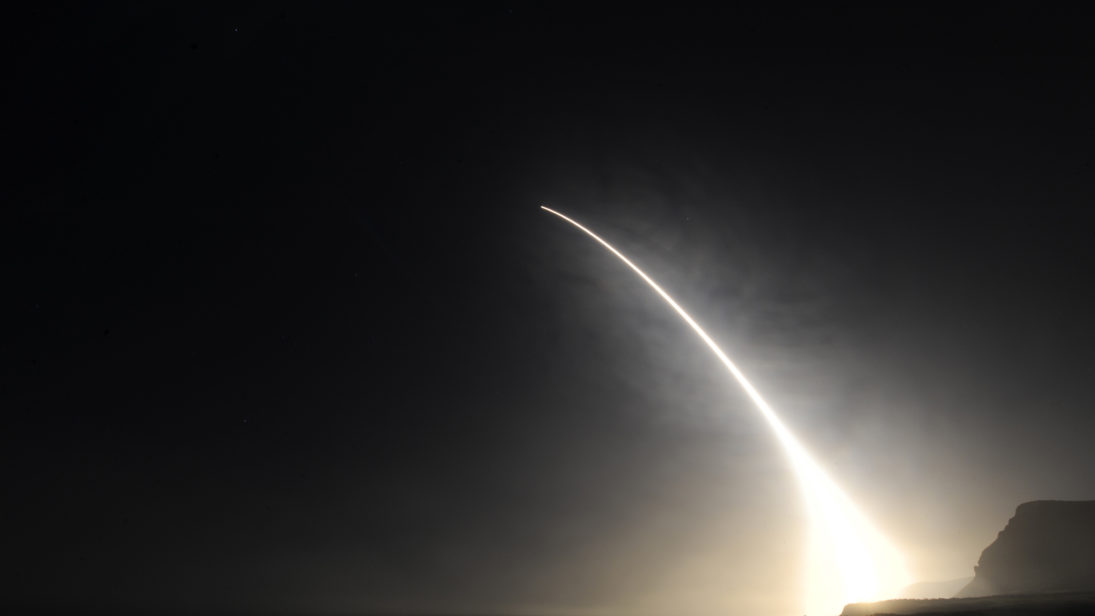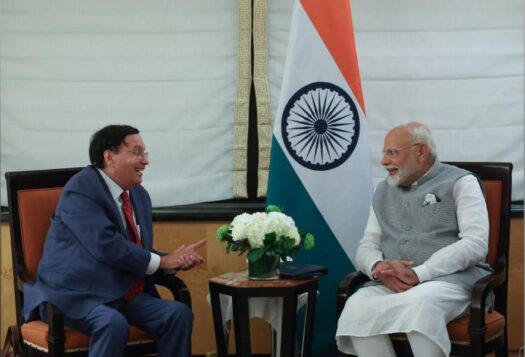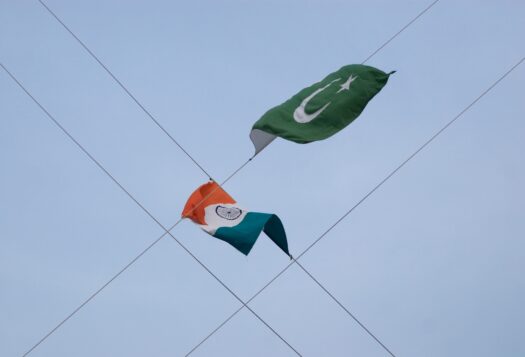
Waning Nuclear Taboo in South Asia
In a recent Stimson Center paper, Nina Tannenwald discusses the dynamics of the “nuclear taboo”, the “normative inhibition against nuclear first use,” in South Asia. Tannenwald points to the declining strength of the nuclear taboo in India—long an adherent to “no first use” (NFU)—due to a variety of factors, such as the rise of a more belligerent anti-Pakistani rhetoric and ambiguous statements on India’s NFU commitments. The nuclear taboo in Pakistan was always weaker than in India since Pakistan’s nuclear strategy depends on being able to convince India that Islamabad will use nuclear weapons in response to certain types of conventional Indian attacks. New Delhi in contrast relies on its larger and more capable conventional forces for defense and principally has nuclear weapons to deter nuclear attacks from China and Pakistan.
Pakistan’s nuclear capability has enabled Islamabad to persist in its low-level insurgent-terrorist campaign against India, largely in Kashmir, despite a quarter of a century of failure to shift the Kashmir dispute in its favor. While analysts will debate the extent, Pakistan’s nuclear capability has deterred Indian retaliatory strikes. As a result, India has become increasingly frustrated by the continued insurgent-terrorist campaign and is seeking ways to deter further attacks. Consequently, India developed its “Cold Start” strategy some 15 years ago and has become more willing to counterattack in recent years, most recently in the Pulwama/Balakot crisis. Pakistan’s response to Cold Start was to develop tactical nuclear weapons to extend nuclear deterrence against smaller Indian operations. This action in turn enlivens the debate inside India about the usefulness of its no first use doctrine thereby reducing the nuclear taboo. This decline in normative inhibitions on nuclear use place a growing premium on increasing institutional relations between India and Pakistan to stabilize deterrence.
Decline in Western Capacity and Interest in Stopping a South Asia War
If the diminishing nuclear taboo in India and Pakistan is troubling, there is also another norm that may be waning—the willingness and capacity of the international community, including the United States, to diplomatically intervene to stop a war and to prevent nuclear use. To some degree both sides, but more so Pakistan, appear to have assumed that the international community, led by the United States, would prevent war and contain a crisis before it escalated in order to stop an Indian offensive before it posed a serious threat to Pakistan and thereby prevent nuclear use.
If the diminishing nuclear taboo in India and Pakistan is troubling, there is also another norm that may be waning—the willingness and capacity of the international community, including the United States, to diplomatically intervene to stop a war and to prevent nuclear use.
In the future, Pakistan and India may not be able to assume the same level of international diplomatic intervention as they had previously. While the United States, the international community, and India will focus efforts to prevent Pakistani-supported terrorism, there is a sense of frustration regarding Islamabad’s continued support to anti-India insurgents and terrorists. Ironically, one of the perverse consequences of past U.S. and international diplomatic interventions in South Asia may have been to encourage risky actions, including terrorism. More fundamentally, the rest of the world looks to India as an increasingly important global actor, well beyond the narrow confines of the long-lasting contest over Kashmir. Additionally, Pakistan’s nuclear strategy, especially its deployment of tactical nuclear weapons makes it increasingly harder for any diplomatic intervention to occur in time, regardless of the intent in western capitals.
Institutional Relationships Key to Deterrence and Stability
While the waning of the nuclear taboo in South Asia increases dangers, the role of any nuclear taboo in bolstering nuclear deterrence and stability may be limited. The nuclear taboo is largely an element of public perceptions and debate rather than a regular element of nuclear strategy and force development. Within any government’s research and development organization and military, the nuclear taboo tends to take a back seat to the practicalities of building, operating, and maintaining a nuclear force. The regular process of developing strategies and plans, allocating money, building infrastructure, etc., is typically not shaped by the nuclear taboo.
As Nina Tannenwald discusses elsewhere, the nuclear taboo was debated during the Cold War in the United States. In the 1950s many parts of the U.S. government, as well as President Eisenhower, sought to minimize the role of a nuclear taboo since it would constrain the U.S. deterrent. While mutual deterrence—and the nuclear taboo—became more accepted in much of the U.S. government after the Cuban Missile Crisis, there were continued efforts to find ways to make nuclear weapons more usable, beyond a second strike, from advocates of national missile defense to debates regarding Enhanced Radiation Weapons (aka the neutron bomb).

In the Soviet Union it is unclear exactly what role the nuclear taboo played given that popular attitudes had little or no influence on government policy. The top civilian leaders appear to appreciate it but given the significant research and investments in nuclear weapons it appears that large portions of the Soviet military leadership viewed nuclear weapons as viable instruments of war beyond a simple second strike. For example, Moscow pursued a large ICBM program which some feared was part of a first strike program. The Soviets also increased automation in nuclear decision making through the so-called “dead hand” program and reportedly sought to weaponize small pox suggesting a “Strangelovian” mindset that is contrary to the nuclear taboo.
The web of formal and informal institutional relationships largely built subsequent the Cuban Missile Crisis was more important than the nuclear taboo for nuclear deterrence and stability between the United States and Soviet Union during the Cold War. This included a variety of arms control negotiations, confidence building measures (CBMs), broader diplomatic dialogue, and multiple discussions across the whole scope of “Track 1, 1.5, and 2.” These institutional interactions over time increasingly shaped the actual decisions of strategists, planners, and budget programmers, in both the United States and USSR and in effect shaped the rules of competition in ways that reinforced deterrence. Of note, even if some of the intensity of the Cold War diminished, it did not end the deep competition and rivalry as events from Vietnam to the Middle East, to South Asia, and to Africa attest—not to mention the Soviet fear of a U.S. attack in the early 1980s.
Steady, patient, and quiet diplomacy between responsible leaders in India and Pakistan is more likely to find traction than broad public declarations and flashy summits. The attitudes of the publics in both countries typically reflect more extreme positions and at times they can be cavalier about nuclear use, rather than constrained by the “nuclear taboo”.
Arms control negotiations, however, were key in setting the broad parameters of force size and to some degree a force’s technical quality. Equally important the process provided an increasing amount of transparency regarding what the other side possessed. Even though the U.S. failed to ratify the SALT II Treaty, all its provisions on force size, modernization, transparency, etc., were adhered to since it had already been “baked into the system” by planners and strategists. The CBMs went beyond nuclear topics and ranged from agreements on military access to East Germany/Berlin and exercises (some predated the Cuban Missile Crisis) to rules for naval and aircraft interaction to limit the potential for smaller events to prompt an escalation. These practical rules probably impacted operational planners more than a broad concern that their actions might risk a nuclear taboo. The absence of institutional interactions between India and Pakistan subjects their nuclear dynamic to all the stresses of seriously contention relations with few off-ramps and a reliance upon the personal decisions of a small handful of people to prevent escalation.
India and Pakistan Need to Find Their Own Way
Indians and Pakistanis rightly point out that the situations and circumstances are vastly different from the Cold War. The U.S.-Soviet interaction centered around stability in Europe and arms control and were between two geographically and historically distant countries (the Bering Strait notwithstanding), while India and Pakistan have much longer, closer, and geographically intertwined histories. However, the level of interaction between India and Pakistan and lack of institutional relationships is a growing concern, especially if the nuclear taboo is waning. New Delhi and Islamabad need to establish a more robust dialogue and set of institutional relationships that are suited to their circumstances. Beyond making a broad political statement, they should be focused on more practical steps that impact the actual development of nuclear strategy and nuclear force development.
To do this, steady, patient, and quiet diplomacy between responsible leaders in India and Pakistan is more likely to find traction than broad public declarations and flashy summits. The attitudes of the publics in both countries typically reflect more extreme positions and at times they can be cavalier about nuclear use, rather than constrained by the “nuclear taboo”. In 2019, the Stimson Center, published several ideas for off-ramps between India and Pakistan that attempted to be tailored to regional issues. These ranged from arms control-style restraint regimes, to addressing some of the border disputes, to improved transparency and communications. Recent efforts to strengthen the 2003 LOC ceasefire may lead to the establishment of a broader more practical dialogue, however, the obstacles are great and involve core issues of national identity and a deep history of distrust and enmity.
Harry I. Hannah is a retired CIA officer who worked on a variety of intelligence issues after 34 years in the Intelligence Community. CIA approval for publication does not represent Agency endorsement or verification of this work. He currently works for The MITRE Corporation. The author’s affiliation with The MITRE Corporation is provided for identification purposes only, and is not intended to convey or imply MITRE’s concurrence with, or support for, the positions, opinions, or viewpoints expressed by the author.’©2021 The MITRE Corporation. ALL RIGHTS RESERVED.
Editor’s Note: This piece is part of a collection of SAV articles reviewing Nina Tannenwald’s Stimson Center Policy Paper: “23 Years of Nonuse: Does the Nuclear Taboo Constrain India and Pakistan?” Be sure to read the full series and watch the webinar discussion on the role of the nuclear taboo in India and Pakistan featuring Dr. Tannenwald, Dr. Manpreet Sethi, and Dr. Sannia Abdullah.
***
Image 1: U.S. Department of Defense, via Flickr
Image 2: via Wikimedia Commons


